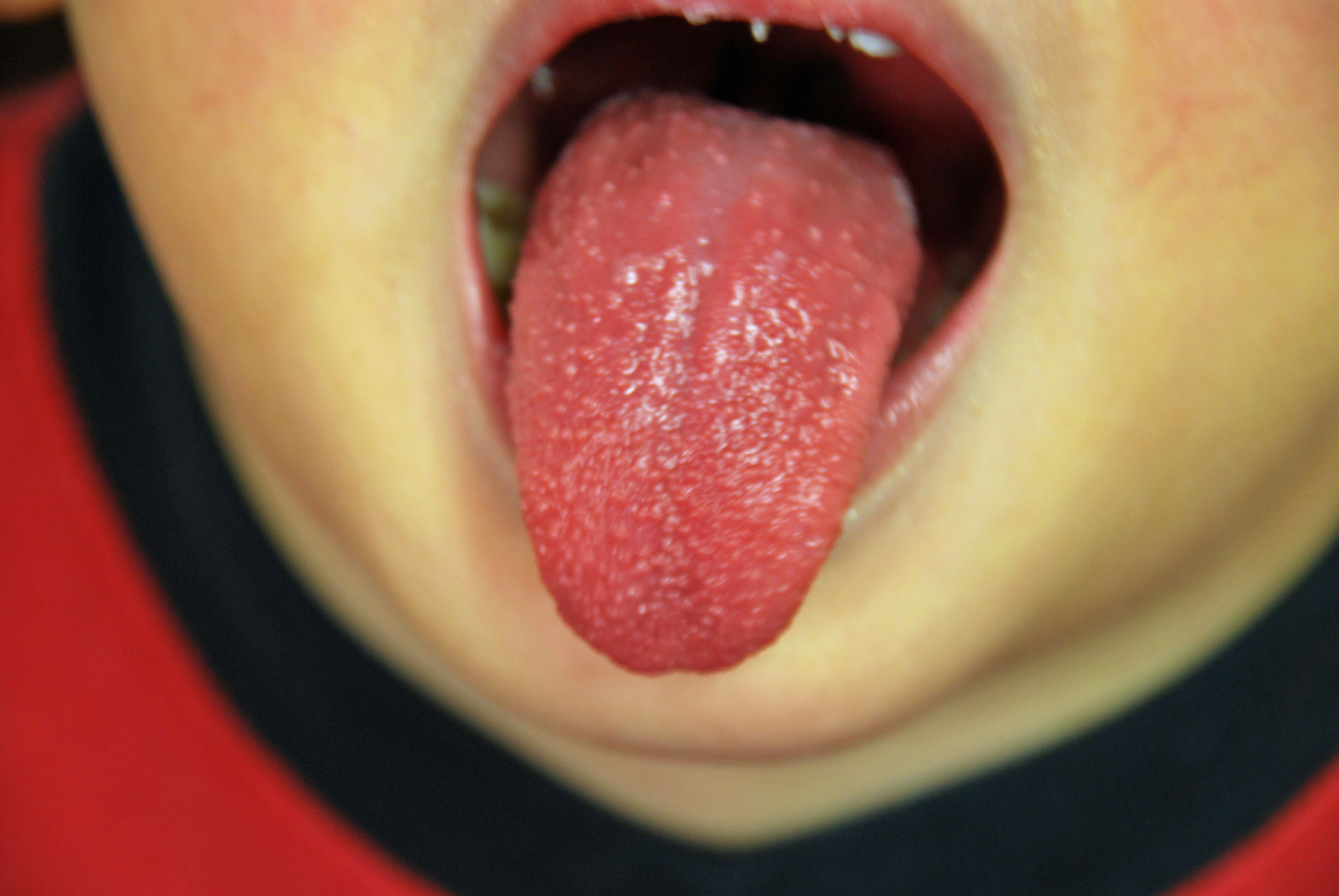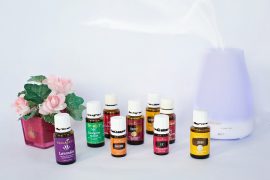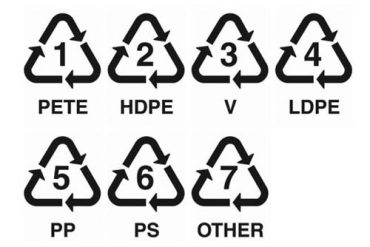When you were little and your mother would say watch your tongue, she was right, although the reasons are different from what she was thinking when she said it. The tongue is an amazing muscle that allows you to taste and speak. On average the tongue has about 9,000 taste buds. A healthy tongue should have a slightly pink color, have a fairly smooth surface and be moist (not slimy).
Why you should look at your tongue
Taking a daily look at your tongue can give you some clues as to what may be going on with your overall health. The symptoms that show up on your tongue, can be a sign of health conditions such as vitamin deficiency, candida overgrowth, diabetes or even scarlet fever. So just what exactly can your tongue tell you?

Fissures– About ten percent of the population have deep fissures or “cracks” on their tongue. While it’s generally not a problem, you should brush your tongue if the fissures are deep, to remove any food that may get stuck in the cracks.
Webbed or Striped-This could be lichen planus. It looks like white raised lacey lines on the tongue. This is a condition where the immune system attacks the cells in the mouth. Unless you’re in pain most doctors don’t treat this, but do monitor it, as you can be at risk for oral cancer. If you are experiencing pain, you’ll likely be given an immunosuppressant or corticosteroids.
Swollen tongue– While this obviously can be a sign of an allergic reaction, it can also be caused by numerous factors such hypothyroidism, cancer, strep and leukemia.
Geographic tongue-This mix of bright red and white spots on the tongue can form patterns (which is how it got the name). It can also change location on the tongue daily. There is no treatment for this. There is an association between this and celiac disease. It can also be triggered by allergies, hormonal changes and stress.
 tiler84/iStock
tiler84/iStock
White patches or white tongue-This can be an indication of candida (also known as yeast or thrush). This is more likely if you’ve been taking antibiotics, are on chemotherapy or have diabetes. It can also be a sign of leukoplakia which can be caused by chronic alcohol or tobacco use. White tongue can also be a sign of dehydration.
Ridges or Indentations-Have you noticed a scalloped edge on your tongue in the morning? These is due to the way your teeth press on your tongue while you’re sleeping.
Bumps– The taste buds at the back of the tongue are larger than those on the rest of the tongue. These bumps are not a cause for concern, unless they are painful. Bumps on other areas of your tongue can be caused by biting your tongue or eating or drinking something hot.
Smooth pale –This can be a sign of vitamin deficiencies, particularly B12. It can also be a sign of anemia.
Canker sores-These can be very painful and usually go away on their own. They can be triggered by stress and fatigue.

Strawberry tongue-Bright red tongue with spots. There can be numerous causes for this from sore throat, Scarlet fever to Kawasaki disease. Both Scarlet fever and Kawasaki disease causes the tongue to have a strawberry-like appearance. It is usually seen in young children under the age of 5 and accompanied by a high fever.
Redness- This can accompany a sore throat, strep throat, scarlet fever or a high fever. It can also be indicative of a vitamin deficiency such as B12, iron or folic acid-although usually the tongue is also shiny. Some individuals with dry mouth can have very red tongues.
Black Hairy-Although this might look scary, it’s harmless. This can be linked with diabetes, poor oral hygiene, cancer therapies, antibiotic use and yeast infections. Although it usually happens when the cells on your tongue grow quicker than the body can shed them. Regular tongue scraping can help with removing the cells.
Keep your tongue healthy
Check your tongue daily. Along with brushing your teeth for improved oral health consider using a tongue scraper 1-2 times a day or brushing your tongue. A tongue scraper is very inexpensive and take only seconds to use.
Learn about the benefits of tongue cleaning and how to use a tongue scraper.
Here are a few products I use for oral health:
Additional resources:
https://medlineplus.gov/ency/article/003047.htm








